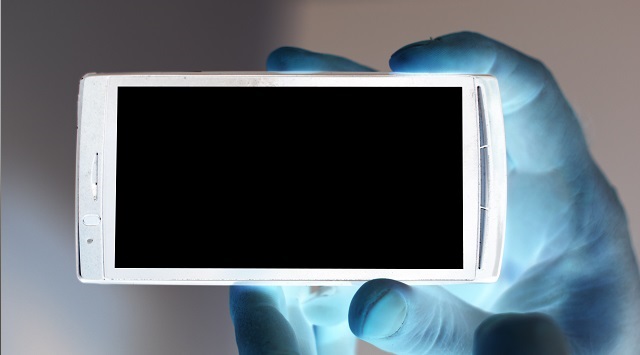Touch screens are everywhere! In our pockets, on our cash points, built into the seat-backs on transatlantic aircraft and even on obscure things like touch screen guitars (See the video below).
With such a huge growth in touch screen use globally, there was a kind of inevitability that something would potentially hinder this continued growth and enhanced consumer experience but, what could limit the growth of touch screen's?
Misa Digital Instruments Kitara
Touch screen guitar from Misa Digital Instruments Kitar
ITO Touch Screen Technology
Electronic devices of all shapes and sizes now feature many different forms of touchscreen design depending on their price point and application. The most commonly used technology on the smart phones and tablets of today works by monitoring changes in electrical current on the surface of the screen. There are also systems that can track the reflection of sound or light waves, vibration, and light and shadow moving across the surface.
Top of the leaderboard for touchscreens in consumer electronics is a system that monitors perturbations in electrical current on a conductive layer within the screen. In order to do this, you need a very fine, transparent material with high conductivity. Your material also needs to be able to handle the tough environment that the average smart phone or tablet might be exposed to (pockets and sweaty palms are not the most forgiving places to be).
The basic principles of this type of touch screen technology are very simple.
When your finger or a suitable object touches the screen, it changes the electrical state at the point of contact. The device then tracks the changes and reacts by completing the tasks the movement of your finger or in the case of multi-touch systems fingers; are requesting.
iPhone/iPod Touchscreens Explained
Great explanation of basic touch screen technology
Indium Tin Oxide (ITO) in Touch Screens
Indium Tin Oxide (or tin-doped indium oxide) is particularly important to the world's dominant smart phone and tablet manufacturers because of its unique material properties perfect for touch screen applications:
- high conductivity
- easily mass produced as thin films
- optically transparent.
Essentially in the majority of the latest smart phones and tablets - ITO forms the conductive layer used to monitor the changes in electrical state as you touch and swipe the screen.

In its thinest form, ITO is both transparent and highly conductive which has resulted in ITO being one of the worlds most popular and widely used transparent conducting oxides.
It is also reasonably easy to handle and deposit ITO as a thin film which makes it perfect for mass production using techniques such as physical vapor deposition, sputtering or evaporation methods.
However, Houston we may have a problem... Indium the main element of ITO is becoming more and more expensive and there are even recent reports in the media that we may, one day run out. As unlikely as this is (according to the Indium Corporation, we have plenty of reserves), it is still an extremely topical subject for designers of the smartphones and tablets of tomorrow.
ITO Applications
ITO is not just used for touch screens, its fantastic properties have created a huge global demand in the following technologies:
- Liquid crystal displays (LCDs)
- Plasma Screens
- Electronic ink applications
- LEDs
- Organic LEDs
- Touch screens
- Solar Cells / Photovoltaics
- Heated windscreens and mirrors
- Sensor coatings
- Strain gauges
- and many more...
ITO comes from the base metal Indium, which like many 'rare' elements on earth is becoming more scarce and therefore, more valuable as we dwindle our readily accessible resources. As global reserves of Indium are used, naturally the price goes up.
There are a number of recent studies on the supply and price of this commodity but one figure that particularly stands out is the fact that the price of Indium rose by circa 25% between 2010 and 2011 (US Government Study 2012). Another interesting fact is that in 2009 flat screen panels accounted for over 50% of the consumption of Virgin Indium (Indium Corporation study, 2009).
There are two logical solutions to the dwindling availability and viability of ITO as a component in touch screens:
- Recycle and re-use
- Find a more sustainable alternative
ITO Alternatives
As we see the price for Indium continue to rise will we see a resurgence in Cornish Tin mining? I doubt this very much but, it will be fascinating to observe how the material science community looks to develop more sustainable, less expensive long term replacements for ITO.
Here's a quick run down of the top contenders to supersede ITO in the next generation of touch screen smart phones and tablets:
- Graphene - the one dimensional wonder material
- Carbon nanotubes
- Thin metal films
- Silver nanowires hybrid materials
- AZO (Aluminum-doped Zinc Oxide)
- Amorphous Indium-zinc oxide
- GZO (Gallium-doped Zinc Oxide)
However, just as in the case of ITO, as we see demand for these materials increase, their price and availability will suffer.
Material scientists and industry experts the world over are pursuing both more efficient ways to use and recycle Indium and the development of more sustainable alternatives. However, for now we may have to continue to expect rising prices for touch screen components so, let's hope you don't crack your screen and need a replacement any time soon!
If I had to pick one to watch, I'd go with the material that has captured both the material science community and the general public's attention most, with a seemingly endless range of unique properties and applications.